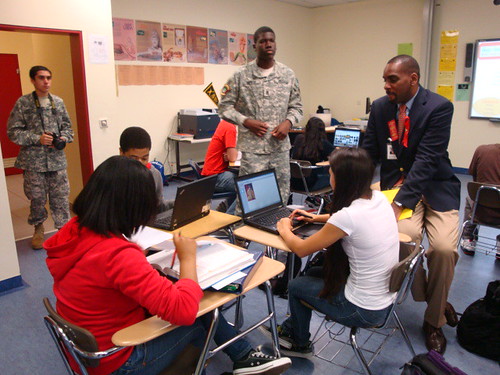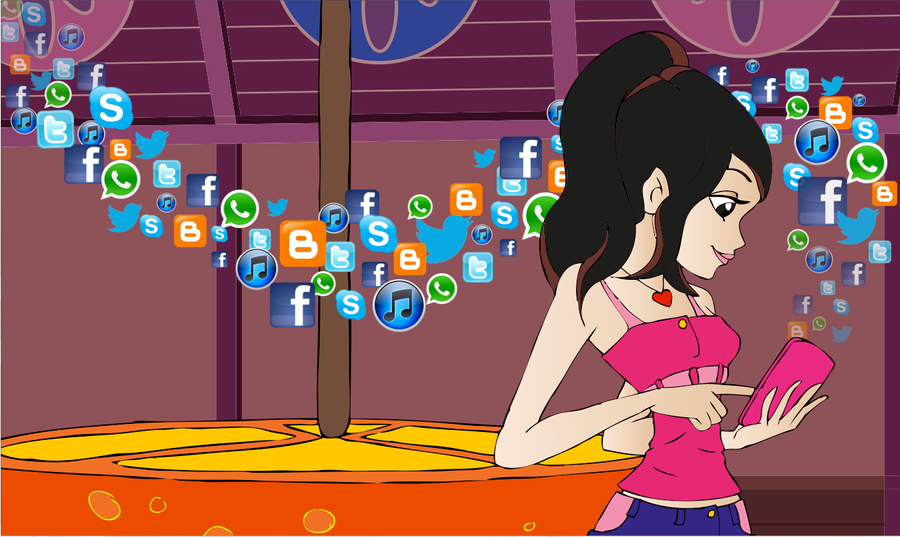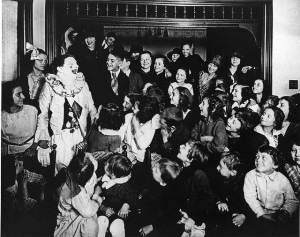When I first met my wife, I told her there were five musical acts she needed to see, and she has seen four of them: 1) Willie Nelson, 2) Ron Sexsmith, 3) Neil Finn in some form, 4) REM (fortunately before they broke up), and the one who she will not make, 5) Prince. I saw him nine times over 25 years, and each one was unique in its own right.
Musically, he was a titan. Nobody could do what he did. Just listen to his singing. His voice alone made him great. Listen to Damn U if you don’t believe me. That is probably a song most people do not even know. That is how good he was.
Right now, I don’t know how to deal with his death, other than to reflect on where my life intersected with his.
1) Lovesexy, November 1988
Sunday night, after the Thanksgiving holiday. My senior year of high school. This is the benchmark of all concerts to follow, the greatest of the great. I took my friend Dawn, who would be my prom date the following May, would receive a bad cancer diagnosis that summer, and would pass on before Christmas. I can never think of this show without thinking of her. Prince’s death certainly brings up feelings of her, as she was such a beautiful soul, taken too soon.
The concert had everything. It was in the round. The stage had a basketball hoop, a car that went around it, a brass bed, bridges, a piano that rose up into the sky… The band was led by Sheila E on the drums, with a horn section. And Prince did everything. He played guitar, did the splits, danced, played piano, sang like an angel (seriously, his singing was his most underrated talent), moved to all parts of the stage, and even spun a basketball on his finger. It was choreographed, it was improvised, and it was incredible.
I still have the shirt to this day.
2) Paisley Park, September 1995
 Prince quit touring America, other than a tiny tour for the symbol album in the early nineties. I had moved to State College, PA, to attend Penn State, and hooked up to the Internet regularly for the first time. Through the old school webspace alt.music.prince, I learned that he would often play at Paisley Park studios on Saturday nights… after reading where he did four consecutive Saturday nights, I took a chance, drove three hours from State College to Pittsburgh, and flew from Pittsburgh to MN.
Prince quit touring America, other than a tiny tour for the symbol album in the early nineties. I had moved to State College, PA, to attend Penn State, and hooked up to the Internet regularly for the first time. Through the old school webspace alt.music.prince, I learned that he would often play at Paisley Park studios on Saturday nights… after reading where he did four consecutive Saturday nights, I took a chance, drove three hours from State College to Pittsburgh, and flew from Pittsburgh to MN.
I was there less than 24 hours. I toured downtown, and saw First Avenue, though didn’t get a chance to find a skyway. I had dinner at a Burger King. Around 7, I pulled into Paisley Park studios, and it was empty. I felt like a chump. So, I walked around a Target to kill time.
I went back around 9ish, and there was a smasll line. I got in it, and eventually they opened the Park. Admission was $10 if memory serves. I walked the halls, saw the platinum albums, his Oscar, R.E.M.’s platinum album for “Out of Time,” and the soundstages. I chatted with his drummer, the great Michael Bland, and his bassist, Sonny T. And then I saw Prince, walking around the people like it was no big deal.
No other star does this that… Neil Young has never let me go to his house and play model trains. Bowie never invited me over to try on clothes. The closest example I can think of is Willie Nelson letting people play his golf course. For as off-putting as I imagine some of his personality quirks likely were, he was incredibly open in his own way, in his own terms.
He came out in all white on stage at midnight, and just shredded on guitar. The set was mostly covers… Voodoo Chile, Honky Tonk Women, The Girl Can’t Help It, I Believe in You… and there it all was, Hendrix, Stones, Little Richard, Dylan… that was Prince and then some.
I was so close I could hear his fingers hit the fret board.
He left on a treadmill that floated him offstage, while playing a beautiful guitar solo to Sweet Thing. The disembodied notes rang out as the crowd cheered.
Again, the dude had a long treadmill that he rode on to move offstage.
I ate breakfast at Denny’s and then slept in the Minneapolis airport to catch a 7 am flight back to PA. I have the bootleg, and you can hear me screaming. It is somewhat embarrassing if you know what to listen for.
3) Phoenix, October 1997, Jam of the Year
I had just moved to Phoenix, and so I went alone. I was still getting to know folks, and did not yet know anyone who would spend 70ish bucks on a ticket for good seats. I did, and was front row, on the left. It was the Jam of the Year tour, which was what he opened with. He did this weird dance thing that involved pretending to brush his teeth.
More notable was the after party, where I used my Pennsylvania driver’s license as a fake credential to move into the VIP area in the upstairs of the club that wrapped around the dance floor. The whole upstairs was closed off, and I may or may not have talked with Kat Dyson, his guitarist at the time. Eventually, bodyguards cordoned all of the radio people and other VIP jabronis into a different section, and I found myself alone with Prince and one of his bodyguards.
I kept my distance, as I figured I would surely be kicked out, and I didn’t want to know if he was an asshole. There was something to just basking in his presence, and being cool with that. Prince gazed down upon his kingdom on the dance floor, and they screamed and pointed when they saw he actually showed up. He even took out his lollipop for them.
Prince and I were both overlooking the balcony, and when he looked my way I flashed him the Hook ‘Em Horns sign. Prince looked back at me, and returned the gesture. We then sat down and talked about the long-term prospects of John Machovich as the Longhorns’ head coach (note: The previous sentence is a complete lie, but the one before it is totally true).
Prince was gone in less than fifteen minutes. The first few months in Phoenix felt charmed.
Thus began the brief period that I walked around with a lollipop that I would point at people.
4) Houston, 1997, Jam of the Year
Back in Houston on winter break, he played Houston on New Year’s Eve. As far as I know, this was one of the only NYE shows he ever played, and the closest thing he did to a NYE 1999 show (see, he had a song, 1999, that… nevermind…).
This time, I took my whole family—mom, dad, and brother. Certainly my mom was skeptical, and I kind of dragged them, but from the moment he hit the stage, she got it. I’m grateful to share that memory with my family, and is one of the only times the four of us ever saw a non-rodeo concert together (Ron Sexsmith in Austin in 2004 is the only other time I can recall). Even though we were in the upper deck, his charisma made it to the top of the Summit.
During one of the many encores, I remember someone playing a drum solo on these drums that lit up when struck. As the lights raised, you could see it was Prince playing. Dude could do anything onstage. At that point, it was after 1 am, and he had been playing over two hours.
He had another after party that I went to with my friends Jayne and her new boyfriend (now husband) Mike, who also attended the show. Mayte, his then-wife, was hanging out by the sound board, and eventually Prince showed up as well. Larry Graham and his band jammed on stage, but at this point it was around 4 a.m., and we were exhausted. Prince apparently jammed on stage for a little bit after we left. Oh well…
A few years later in 2001, when I was deep into stat runs for my dissertation, I received a late night call from my parents, who were on vacation in Miami. They were apparently at a Prince party at Club Opium, hanging with Prince and Lenny Kravitz… or at least they were at the club together.
5) Houston, 2002, The Rainbow Children
I was in whatever fan club he had at the time, one of those that was supposed to last forever and that’s a mighty long time, but was reconfigured a few years later into a different kind of fan club. I lined up early, and got to file in during sound check. Inside, his band was warming up. Prince sat in the middle of the theater working on the sound mix. He eventually jumped on stage, and did something like played the melody to Strange Relationship, but sang the lyrics to Forever in My Life.
He talked to the audience after this (100 of us or so), regretfully hogged by some gal’s selfish overlong story. There was something cool to watch Prince interact with folks while sitting on the lip of the stage.
It took halfway through the actual show for me to realize the extra gear he had turned on, and how his intensity had ratcheted up. If memory serves, he played no guitar during that show. He mostly played keyboards, or just sang and danced. Maceo Parker did a solo from the balcony. He played Adore during the encore, and ended with Purple Rain on the keys.
This was his most overtly religious show—he could get wrapped up the body but then move to the spirit on a dime, and in his music you find awareness that there was a life beyond what we see. I like to think he walked into Heaven through the out door.
6) Tampa Bay, April 2004, Musicology
This was a last-minute show for me, as I already had tickets to see him in Jacksonville the next night. Close to the show, I found a second row lower level ticket. Since the show was in the round, it was somewhat close to the stage.
He had this awesome section where he played acoustic guitar on a chair, and he just spin around to face different parts of the audience. I imagine this is how his piano shows were. Damn, he still had so much music left to give…
After the small theater show in 2002, it was fun to see Prince play in a giant arena. For whatever reason, fans were finding him again. And with the Rainbow Children tour under their belts, the band was TIGHT.
7) Jacksonville, April 2004, Musicology
The next night I saw him in Jacksonville with my friend Steve, who I had seen quite a few shows with. We had great seats through the fan club… around 6th row on the floor.
As two white guys in our thirties, we were mostly stoic at shows, though I tend to sway with my arms folded. But not at Prince… his performances could make you lose self-consciousness, and as the cliché goes, dance like no one is watching. Clearly, somebody was watching, as the couple next to us was selected to dance on stage, and we weren’t.
It could have had something to do with the dude’s purple suit. I like to believe that… but it was probably our dancing. In retrospect, I would have dressed more outrageously to that show.
8) Houston, August 2004, Musicology
A third show on this tour… I could see this show every night for a year and not get tired of it. Each time I saw it, the show got better, and this was the topper.
I was second row on the other side of the floor, and my mom accompanied me as a birthday present for her. During the concert, he threw a copy of a Rolling Stone magazine right to my mom, but the person in front of us snagged it out of her hands. Still, Prince and my mom knew who that issue was intended for.
It is hard to beat Prince on a Saturday night in Houston.
9) Portland, April 2013, Third Eye Girl
I could not buy advance tickets to this show because my wife was due with our second son any moment, and eating $200 is frowned upon in my house, understandably. That afternoon, when it appeared she wasn’t going into labor, I found a day-of ticket. The hospital was between my house and the Roseland Theater, so I could leave and beat my wife to the hospital (my folks were with her to drive her).
It was Prince playing in a club. I couldn’t miss it. My wife, overdue with child and quite uncomfortable, would not have enjoyed anything at that point.
He opened with the slowed-up Let’s Go Crazy, and then it got interstellar with Endorphin Machine. Even though he performed “Play That Funky Music White Boy” (I think to troll the Portland audience), it was still a great show—he limited himself to blaring guitar, and played in a style I had not seen save twenty years earlier at Paisley Park.
Even though phones were banned, surreptitiously I still had to keep checking mine to see if I had a message from my wife to get to the hospital. Fortunately, there were none.
The next day, I recovered by taking my oldest child and parents to the zoo. The following morning, 24 hours after I had returned from seeing Prince, my wife’s water broke, and we headed to the hospital.
Prince died on the same day as one of my dearest friends, Jeff.
This loss certainly isn’t as deep as losing a friend or family, but there is something to be said for the relationships we have with artists, who in some ways transcend time and space. Traveling through different cities, and with different people, Prince has been a constant since I heard Little Red Corvette as a wee child. To me, there has not been a musical loss of this magnitude in my lifetime.
Life is a thing you do between Prince concerts. During his shows, you hit transcendence.






